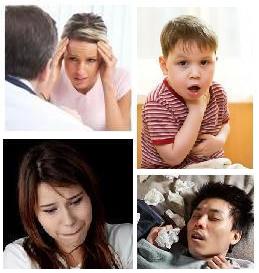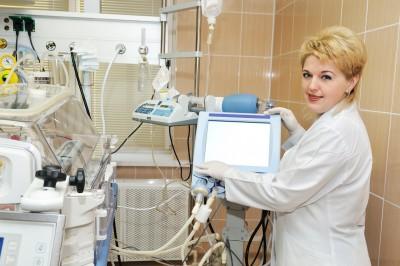- Updated on September 13, 2020
![]() By Dr. Artour Rakhimov, Alternative Health Educator and Author
By Dr. Artour Rakhimov, Alternative Health Educator and Author
- Medically Reviewed by Naziliya Rakhimova, MD
Cystic Fibrosis Symptoms/Stages Correlate with Cell Oxygen Levels
In this YouTube video, Dr. Artour Rakhimov explains basics of cystic fibrosis and how breathing retraining, according to the experience of his students and experience of Soviet Buteyko doctors, reverses stages and symptoms of cystic fibrosis.
 As it was considered on other web pages, dysregulation in the work of the CFTR mutation gene is caused by low levels of oxygen in body cells by overbreathing in patients with CF. This conclusion was independently tested and confirmed by three teams of scientists from the USA and Germany (see the links to these studies in a side menu). These teams also found that the degree of CFTR mutation gene abnormalities is proportional to the level of tissue hypoxia and these abnormalities are expressed in cystic fibrosis symptoms and stages of CF gradually leading to the end stage.
As it was considered on other web pages, dysregulation in the work of the CFTR mutation gene is caused by low levels of oxygen in body cells by overbreathing in patients with CF. This conclusion was independently tested and confirmed by three teams of scientists from the USA and Germany (see the links to these studies in a side menu). These teams also found that the degree of CFTR mutation gene abnormalities is proportional to the level of tissue hypoxia and these abnormalities are expressed in cystic fibrosis symptoms and stages of CF gradually leading to the end stage.
Over 200 Russian doctors tested hundreds of people with CF and found that their body O2 content accurately reflects their health. Let us consider details of this dysregulation, or effects of cell hypoxia on symptoms and stages of cystic fibrosis.
Initial symptoms of cystic fibrosis
 Clinical evidence of more than 150 Russian medical doctors teaching breathing retraining (the Buteyko method and Frolov respiration device) have found that the initial or very mild symptoms of CF and abnormalities in the work of the CFTR protein are triggered when the body oxygen level is below 30 s. (We assume here that the person with cystic fibrosis previously had normal body-oxygen levels and, as a result, he or she did not experience any negative symptoms.) This stage is accompanied by the appearance and dominance of pathogens in the GI tract with light symptoms in pulmonary and hormonal areas.
Clinical evidence of more than 150 Russian medical doctors teaching breathing retraining (the Buteyko method and Frolov respiration device) have found that the initial or very mild symptoms of CF and abnormalities in the work of the CFTR protein are triggered when the body oxygen level is below 30 s. (We assume here that the person with cystic fibrosis previously had normal body-oxygen levels and, as a result, he or she did not experience any negative symptoms.) This stage is accompanied by the appearance and dominance of pathogens in the GI tract with light symptoms in pulmonary and hormonal areas.
Mild or moderate symptoms (stage 2) of cystic fibrosis
 Many web pages of this website refer to 20 s threshold for the body-oxygen test as a very significant number. It corresponds to the appearance of numerous physiological and biochemical abnormalities in the human body, including cell hypoxia, suppression of the immune system, problems with protein metabolism and synthesis of various fundamental substances, including hormones and neurotransmitters and many others.
Many web pages of this website refer to 20 s threshold for the body-oxygen test as a very significant number. It corresponds to the appearance of numerous physiological and biochemical abnormalities in the human body, including cell hypoxia, suppression of the immune system, problems with protein metabolism and synthesis of various fundamental substances, including hormones and neurotransmitters and many others.
In relation to airways, overbreathing causes chronic inflammation, mucociliary dysfunction, generation of extra mucus (as in asthma and bronchitis), the appearance of allergic reactions and bronchoconstriction. The effects are mostly triggered by hypocapnia (or CO2 deficiency).
It is suggested here that abnormal breathing parameters affect the mutated CFTR protein, which is responsible for the synthesis of a protein that functions as a channel for chloride ions and is controlled by cyclic adenosine monophosphate. Mutations in the transmembrane conductance regulator gene cause abnormalities of chloride transport across mucosal surfaces. Defective CFTR gene causes diminished secretion of chloride ions and increased reabsorption of Na and water across the epithelial cells. This causes mucus that is thicker and stickier.
More severe symptoms (stage 3) of cystic fibrosis
 Increased inflammation and pathological load on the human organism due to infections further intensify breathing in people with cystic fibrosis. Later stages are characterized by less than 10 s CP during early morning hours (the patient has less than 10 s of oxygen in the body; that means they breathe about 4 times more than the tiny medical norm) or transition to the pre-final stage in the Buteyko Table of Health Zones.
Increased inflammation and pathological load on the human organism due to infections further intensify breathing in people with cystic fibrosis. Later stages are characterized by less than 10 s CP during early morning hours (the patient has less than 10 s of oxygen in the body; that means they breathe about 4 times more than the tiny medical norm) or transition to the pre-final stage in the Buteyko Table of Health Zones.
With less than 10 s CP, even human blood does not resist the spread of various infections and the whole clinical picture quickly deteriorates. Involvement in the respiratory system becomes progressive: bronchitis and bronchiolitis transform into bronchiectasis. Possible complications include hemoptysis and pneumothorax. Severe dyspnea, strong chest pain and difficulty breathing are frequent complaints. The clinical picture is worsened by severe abnormalities in CFTR work.
Severe hyperventilation also promotes the development of complication due to diabetes.
The last stage (stage 4)
 With less than 5 s CP, as the Buteyko Table of Health Zones suggests, patients with cystic fibrosis enter into the zone where they fight with death. Severe alveolar hyperventilation leads to critically low CO2 levels in airways with frequent development of cor pulmonale (high blood pressure in the pulmonary arteries and right heart overload). Such a 0 clinical picture is typical for the end-stage lung disease, which is the principal cause of death in most patients with CF.
With less than 5 s CP, as the Buteyko Table of Health Zones suggests, patients with cystic fibrosis enter into the zone where they fight with death. Severe alveolar hyperventilation leads to critically low CO2 levels in airways with frequent development of cor pulmonale (high blood pressure in the pulmonary arteries and right heart overload). Such a 0 clinical picture is typical for the end-stage lung disease, which is the principal cause of death in most patients with CF.
Which CF stages (end-stage too) and symptoms are reversible?
Experience of Russian medical doctors with hundreds of people with cystic fibrosis suggests that it is generally (for most people with CF) possible to slow down their heavy breathing and move in the opposite direction. Does it work for all stages? Is it easy or possible to reverse the end stages of cystic fibrosis? Find out answers in the bonus content right below here.
If a person with CF can increase their CP (body O2 test) up to 20+ s in the morning (this may require 2-3 hours of breathing exercises per day plus 1-2 hours of easy physical exercise), they can reverse any stage of CF, including the end stage.
[/sociallocker]
YouTube video: Trailer of the Amazon Kindle Book ” Cystic Fibrosis: Life Expectancy: 30, 50, 70…”

